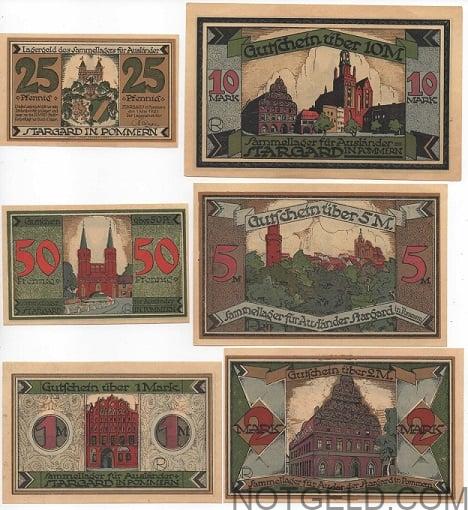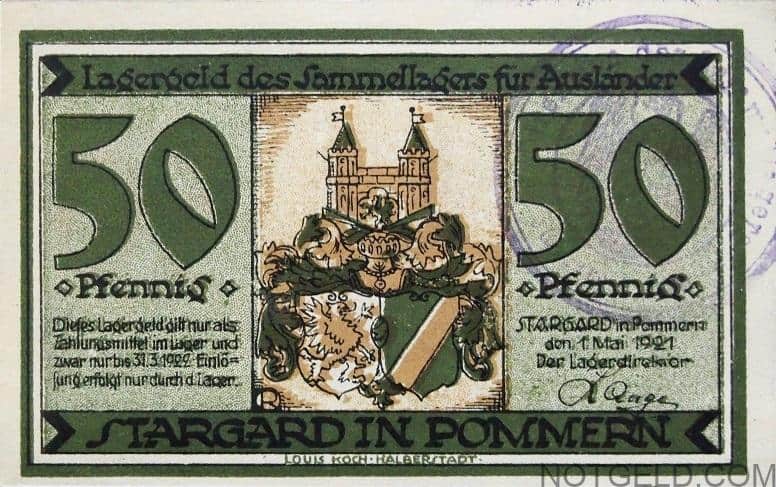Prisoner of War / ‘Kriegsgefangenenlager’ Notgeld
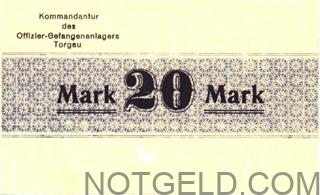
During the first world war, notes were issued by prisoner of war camps. Sometimes these camps held officers and non-commissioned soldiers. Others appear to have held only officers. The money issued by the camps was only valid in that particular camp. If the POW moved camp, he would be issued the new camp’s money…….for performing chores and tasks etc. he would then be able to spend it at that camp.
The above note was issued for the Officer P.O.W. camp at Torgau. In this set there are different valued notes, each with a different vertical or horizontal bar. Up to and including the 1m note, the coloured bar is vertical; greater than 1m, the bar is horizontal.
Another POW note is shown below, this time from the Wildemann Officer prisoner-of-war camp, which was located near Hannover. It catalogues as ‘Wildemann.15’ in Tieste’s new hardback POW catalogue, with a catalogue value of 25 euros in uncirculated condition. The back of the note is plain. there is no watermark in the paper and this note has no stamp mark. Some issues from the POW camp were issued on linen and their values are around 250 euros each in uncirculated condition!
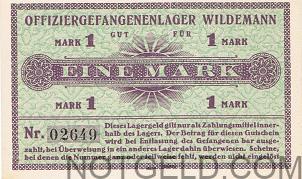
Some KGL / POW pieces are like stamps with the name of the camp stamped across them. These are very small in size and quite varied.
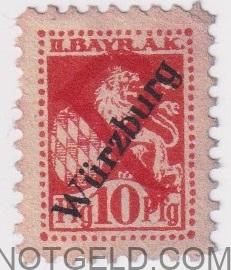
The following scan shows 4 POW notes issued on a waxed linen material. The 1m piece, unusually has no number. The 50m piece has been hole-punched cancelled.
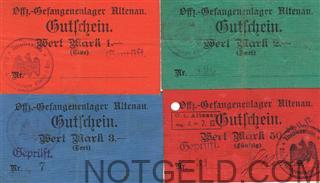
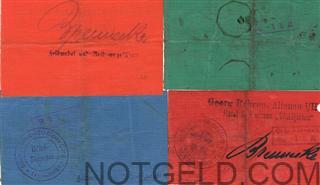
In Germany the first concentration-camps appeared in 1921 in Cottbus-Sielow and in Stargard in Pommerania. The, already then officially so called “Konzentrationslager” were established on the premises and in the buildings of former POW-camps, and on the 23rd of jan., 1921, the then prime-minister Dominicus (DDP) announced, that as of now a start would be made with the internment of unwanted foreigners. This was aimed mainly at Jews, who, or whose ancestors had immigrated, but who, according to prussian legislation from 1842 and Reich-legislation as per 1871, were no more being integrated and who now, treated as unwanted foreigners and being guarded by “Reichswehrsoldaten”, should be removed from the country, but can’t be for several reasons, as the Prussian Minister of the Interior Carl Severing (1875-1952) apologetically explained in the Prussian Parliament, when questioned about it. Apart from the former, during the first years of the “Weimarer-Republik”, “Verfassungsfeinde”, by which were meant exclusively Communists and Socialists, were taken into “Schutzhaft” (“protective” custody), meaning they were interned without judicial judgement and charges/suspicion in camps that, just as the removal-camps for unwanted foreigners, were designated as “Konzentrationslager”. These camps were closed again and until 1933, the Nazi’s had to satisfy themselves with threats of concentration-camps, that they, in case of an election-victory, would implement by “instant detention and condemnation of all communist and social-democratic party-executives, and accommodation of suspect and intellectual incineration, as the “Völkische Beobachter” announced on aug. 11, 1932.
The Sammelllager fuer Auslaender Stargard (see set of 6 ‘serienscheine‘ below) was an outright Konzentrationslager for Jews, refugees from the russian pogroms, ……..so quite soon after the end of The Great War. The notes are dated 1921. occasionally you will find them with a round stampmark on them!
(info supplied to me by GNCC member ‘Charles’)
